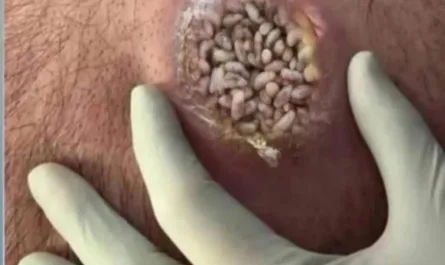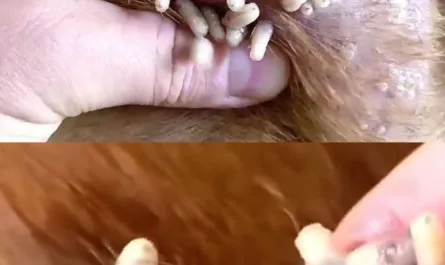Irish Farmer Unearths 50-Pound Chunk of Ancient Bog Butter in Donegal
In a stroke of serendipity, Irish farmer Micheál Boyle made an extraordinary discovery while digging a drain on his farm in Loughfad, Portnoo, County Donegal. What he initially thought was an unusual object in the peat turned out to be a 50-pound slab of bog butter, a prehistoric dairy product preserved for centuries—or possibly millennia—in the cool, acidic depths of Ireland’s peat bogs. This remarkable find, one of the largest of its kind, offers a tangible link to ancient Irish practices and the ingenious use of bogs as natural refrigerators.
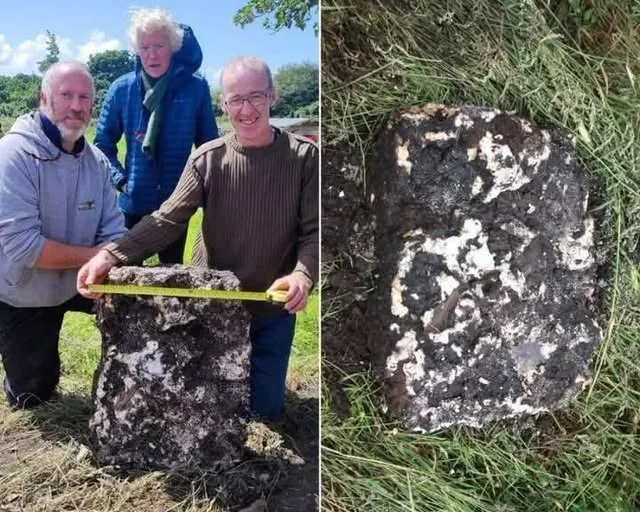
A Cheesy Scent from the Past
Boyle’s discovery came by “pure luck,” as he told the Irish Examiner. While working with digger driver Alan Moore, he noticed a white object about a foot below the surface, emitting a distinct “salty, cheesy smell.” As they carefully excavated, they uncovered a perfectly preserved, greasy rectangle of bog butter, weighing between 22 and 25 kilograms (48–55 pounds). A small piece of wood found at the base of the slab suggested it was once stored in a wooden container, likely a keg or box, that had long since decomposed. “There was no mistaking what it was,” Boyle said, marveling at the find’s pristine condition.
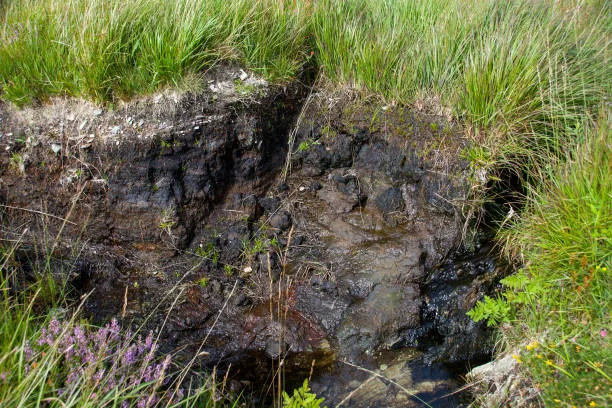
Bog butter, a waxy substance made from cow’s milk or occasionally animal fat, was commonly buried in Ireland’s peat bogs as early as the Iron Age (circa 500 BCE) and possibly earlier, with some samples dating back to the Bronze Age (circa 1700 BCE). The bogs’ low-oxygen, highly acidic, and cool environment acted as a natural preservative, keeping organic materials like butter, and even human remains, remarkably intact for thousands of years. This particular slab, currently under analysis at the National Museum of Ireland, may date back to the Bronze Age, making it a significant archaeological treasure.

The Art of Bog Butter Preservation
The practice of burying bog butter was widespread in Ireland and parts of Scotland, with over 500 recorded finds in Ireland alone. Ancient communities would press butter into wooden containers, barrels, or animal bladders, sometimes wrapping them in bark or skins, before submerging them in bogs. The reasons were likely twofold: preservation and ritual. The bogs’ refrigerator-like conditions—low temperatures, minimal oxygen, and high acidity—prevented spoilage, allowing butter to be stored for leaner times or as a tax payment, as noted in historical Brehon laws. Some archaeologists also suggest that bog butter was buried as offerings to gods or spirits, a practice tied to ancient Celtic beliefs.
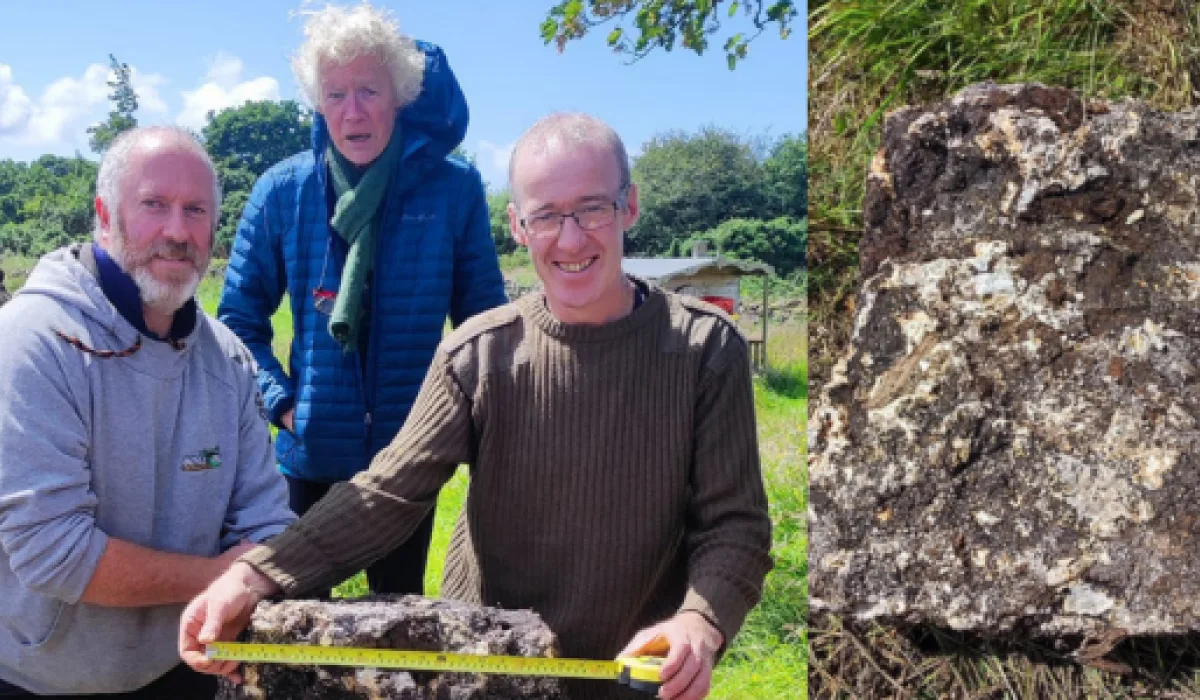
The Donegal slab’s size is exceptional, as most bog butter finds are the size of a mixing bowl. Local archaeologist Paula Harvey, who examined the site, described it as potentially “one of the biggest chunks of bog butter found in Ireland to date.” The small wooden fragment found with the slab supports the idea that it was stored in a container, a common practice that protected the butter before the bog’s preservative qualities took over.

A Taste of History
Perhaps the most surprising detail of Boyle’s discovery is that archaeologist Paula Harvey sampled a sliver of the ancient butter. “It does taste like butter, an unsalted butter at that,” she told The Irish News. “I had a sliver, and I’m still here to tell the tale.” Her bold taste test confirms that bog butter, despite its age, can remain edible, though its flavor often takes on earthy, pungent notes described as “gamey,” “mossy,” or even “salami-like” in modern experiments. The absence of salt, unlike modern butter, is typical, as Bronze Age communities may not have used salt for preservation, relying instead on the bog’s natural properties.
The edibility of bog butter is a testament to the bogs’ remarkable preservative power. Research, such as a 1995 study by University of Michigan researcher Daniel C. Fisher, showed that meat buried in a bog for two years had bacterial counts comparable to freezer-stored samples. This explains why bog butter, and even bog bodies like the famous Tollund Man in Denmark, remain so well-preserved.
A Local Legacy
While the bog butter is currently being studied at the National Museum of Ireland, there is hope it will return to southwest Donegal for display at the Kilclooney Dolmen Centre. “The slab of butter wouldn’t mean anything to anybody visiting a national institution, but it certainly would mean an awful lot to the local community here,” Harvey noted. Boyle himself considered reburying the butter with a message in a bottle, a whimsical nod to its historical burial, but ultimately agreed to its scientific analysis.
The find underscores the deep connection ancient Irish communities had with their land, using natural resources like peat bogs to preserve vital food supplies. It also highlights the ongoing surprises hidden in Ireland’s bogs, from butter to bog bodies, which continue to reveal secrets of prehistoric life. As Harvey reflected, “People in bygone times were closer to nature, and were closer to the land than we unfortunately are, and they used everything and anything that they possibly could to preserve their food produce.”
A Window into Ancient Ireland
Boyle’s bog butter is more than a quirky discovery; it’s a window into the ingenuity and resourcefulness of Ireland’s ancient inhabitants. Whether buried for practical storage, protection from thieves, or as a sacred offering, this 50-pound slab tells a story of survival, tradition, and adaptation. As researchers continue to analyze its age and composition, the Donegal bog butter joins a long list of Ireland’s peat-preserved treasures, reminding us that even the simplest acts of the past can leave a lasting legacy.
